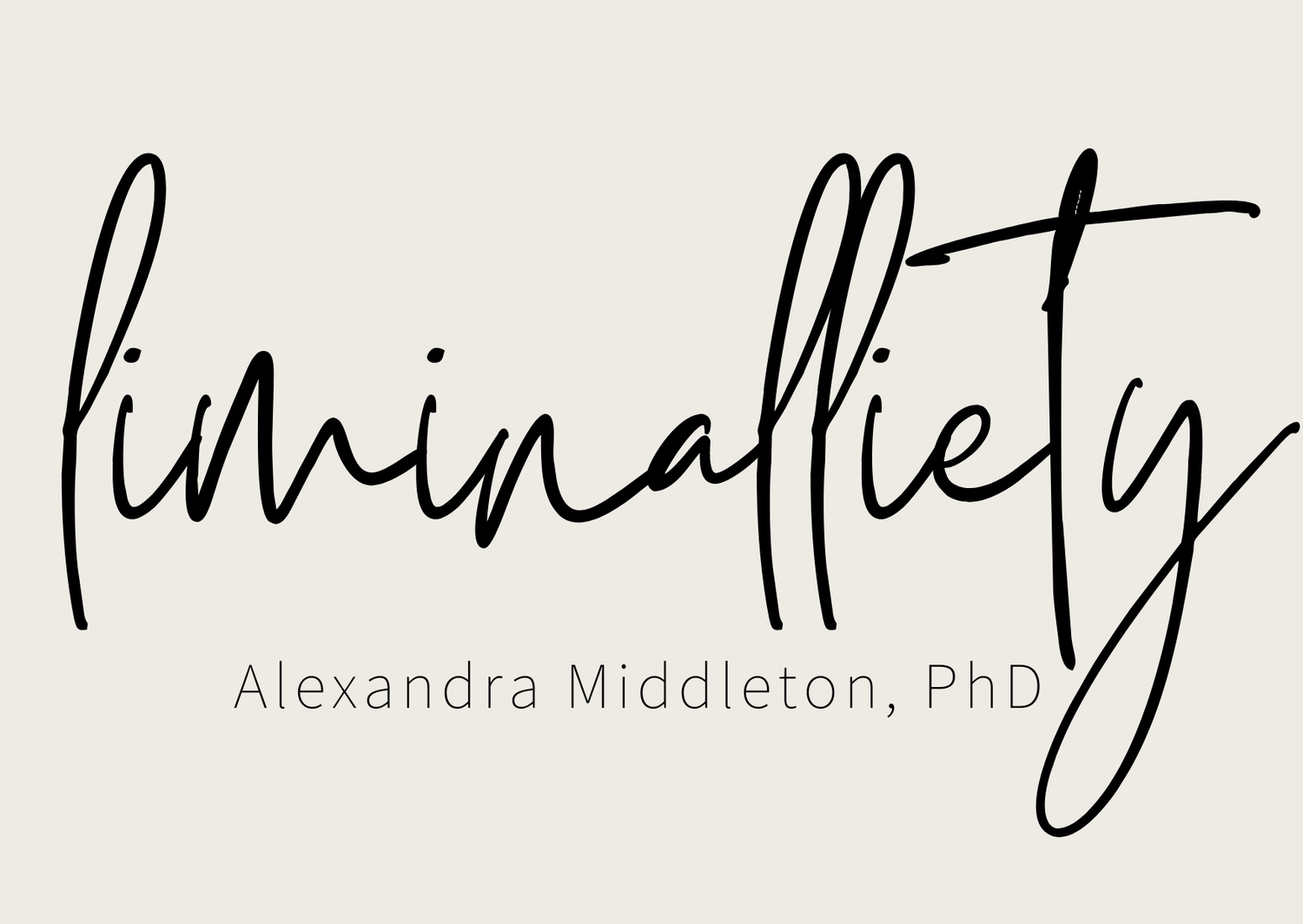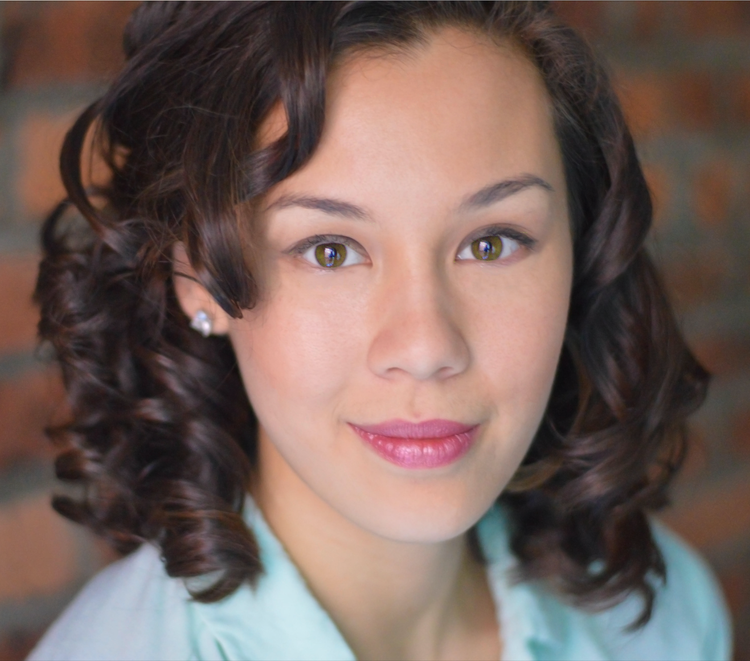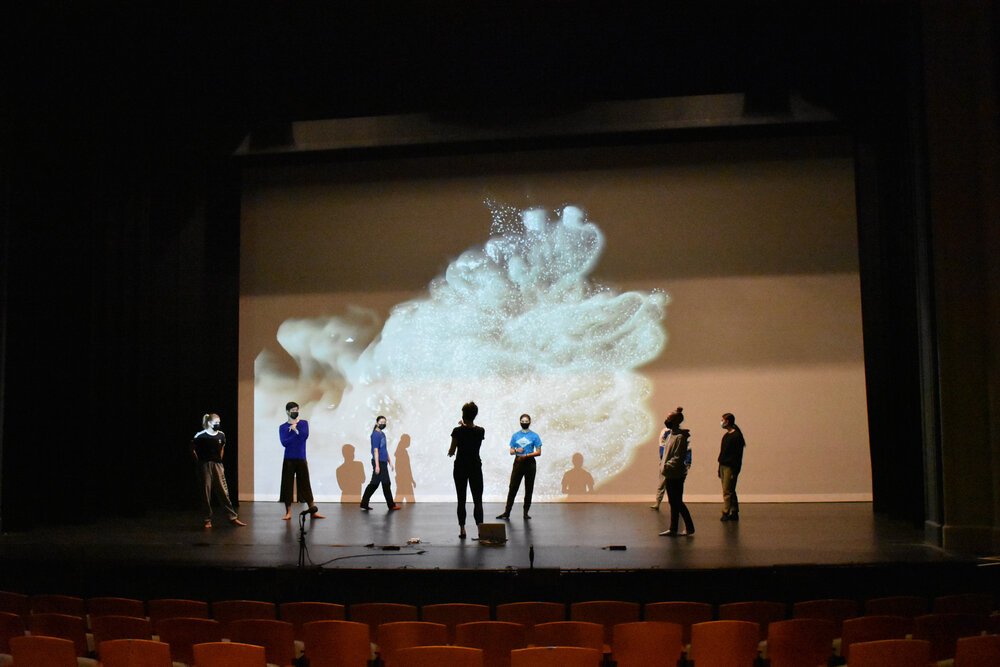Courtney Liu :: Flow, Body Image & Dance
“When was the last time you felt wholly alive in your body? When every fiber of your thinking, moving, breathing being was engaged in an activity?” Courtney Liu, a Broadway ballet dancer and dance teacher, asks in her artist’s statement.
The answer, for many ballet dancers, is unfortunately not always. Despite ballet’s focused gaze on the body, Courtney points out, structural and internalized barriers present a “self-objectification that emerges when movers are told that their body and mind are separate, that this separate body is not good enough, that this separate body cannot be trusted, and that this separate body exists as an object for consumption.” Courtney’s approach to “radical acceptance of somatic listening” facilitates a re-entry into the body to access an internal state of flow and embodied expression.
Herself an accomplished dancer, Courtney’s performance credits include the Broadway cast of Phantom of the Opera, the Radio City Christmas Spectacular, and Matthew Bourne’s Swan Lake, among many others. Courtney and I met at Duke (T’ 13) as undergraduates, where she also recently completed her MFA in Dance as part of the program’s inaugural cohort. After watching Courtney’s riveting MFA choreography and her compelling thesis presentation about the intersection of flow states, body image, and dance pedagogy, I reached out to catch up and learn more about her exciting work and art.
Join us below for a conversation about embodiment, movement, falling in love with one’s body, and adapting ballet teaching and dancing during the pandemic. And watch Courtney’s MFA performance here!
Your MFA thesis explores the relationship between body image, flow state, and dance pedagogy. I'd love to hear more about what led you to this particular intersection of themes? And what led you to dance as the medium for questions about the body and flow?
Courtney’s MFA thesis performance, “Waters to Waters: Between Yu & Flow". Watch a video of the performance here.
During the MFA I moved towards a pedagogical approach to address the high rates of eating disorders in the dance community because I found a hole in the literature. There is a good amount of clinical research on how to treat eating disorders once they develop, but not a lot of information on how dance teachers can prevent the kinds of thinking and the negative body image that can lead to disordered eating and eating disorders. I am also a dance teacher myself. Therefore, taking a pedagogical approach was a practical way for me to pursue research while simultaneously thinking through and improving my teaching philosophy and practice.
“EVERY TIME I ENTER THIS DANCING FLOW I FALL MORE DEEPLY IN LOVE WITH MY BODY – WITH ITS ENDLESS POSSIBILITY AND POWER TO CREATE, LISTEN, AND SPEAK.”
For the last question, I would say that the inquiry happened in reverse – dance led me to questions about the body and flow. Similar to those who have a personal yoga practice where they tune in to their mind-body-spirit, I have cultivated a personal dance practice since I was a pre-teen. I didn’t realize until my MFA that this continued practice was a pursuit of embodied flow states. Every time I enter this dancing flow I fall more deeply in love with my body – with its endless possibility and power to create, listen, and speak. My research in the fields of sociology, positive psychology and women’s studies during the MFA deepened my understanding of this dance practice and helped me to connect flow, self-objectification, dance, and body image.
How has your research impacted the way you approach the body in your own teachings? Your own dance practice?
Courtney teaching in the studio pre-pandemic.
In my teaching I use language and tools that emphasize each student’s full, three-dimensional self. While it is important for students to understand the visual containers and shapes of ballet (and other forms), it is paramount to me that the student does not feel like they are trying to squeeze themselves into a ballet box that is historically thin, white, heterosexual, and able-bodied. Rather, I encourage students to work from an inside-out, somatic perspective in my class – to find the way the lines of ballet feel in their own bodies. I invoke a great deal of imagery to help students feel the quality of each movement, listen to the complexity of the music, and sense the energy of the community that surrounds them. Ideally, this sensory environment includes vision as a tool in the toolbox but also acknowledges that dance is more than what meets the eye. It is my hope that this approach helps dancers of all shapes and sizes to see themselves as a part of the present and future of ballet.
During the pandemic, you began teaching ballet students out of your garage over Zoom. I'd love to know a bit more about "Garage Ballet" -- its genesis, how you adapted both your own personal practice and to teaching embodied movement online, and any surprising challenges/affordances/insights along the way? What elements of "Garage Ballet" will you take back into your in-person teaching/practice?
Oh I have loved teaching #garageballet this pandemic! To quote a fellow garagerina, #garageballet is a community of folks who are “interested in how ballet is happening.” We share our discoveries with each other in the chat and in brief discussions during class. We also share articles, upcoming events, and other tips in a shared Facebook group.
When the pandemic hit I had to quickly transfer my Advanced-Beginning Ballet class at Duke to an online setting. When the class ended I wanted to continue to teach online so I started posting about #garageballet and it slowly grew into a consistent community. We have now been dancing together 2x/week for over a year and I plan to continue as long as folks keep showing up.
Courtney teaching #garageballet via Zoom.
In terms of learning to teach on Zoom, the first thing that needed attention was audio and space. I cleared the clutter, moved the car to the driveway, made a ballet barre out of a clothes rack stabilized by two pieces of wood, created a workstation and place for the computer, and taped the floor so I would know where to stand to stay in view of the camera. Finally, I did some test runs for audio to be sure the dancers could hear both me and the music.
After these nuts and bolts were in place I started to adapt my teaching. Following Houston Ballet’s lead, the dancers began jumping in sneakers (to protect themselves from dancing on non-dance floors) and I created combinations that were suitable for the unconventional footwear. I became accustomed to teaching combinations facing both the front and the back. Many students were dancing without a mirror so I brought even more sensory imagery into my teaching. I increased the amount of times I asked a student to demonstrate because I wanted other students to see the wonderful dancing that was happening in our Zoom room. I also utilized the chat as a way to quickly learn more about what students were thinking. For example, at the beginning of class we state our intention or goal for the day. In an in-person setting, the process of each student sharing takes a lot of class time. With the chat we can simultaneously share our thoughts while I make mental notes on how to help each student on their particular goal for that day.
Prior to the MFA, you performed on Broadway in the Phantom of the Opera as well as Swan Lake, Radio City Christmas Spectacular, among other shows. I saw recently a post of yours that Phantom is planning a return to live performance on Broadway. What are your hopes for how creative work -- both dance and beyond; your own and more broadly -- will transform and evolve, coming out of the pandemic?
Prior to the MFA I was predominantly focused on performing and was able to teach when I was not on tour. During the MFA I stepped away from dancing to focus my energies intensely on teaching, choreography, and research. As we come out of the pandemic I would like to find a balance between all of these pursuits. I have started to chart this path with my immediate post-graduation plans. This summer, I look forward to choreographing for the New York-based company, Thistle, presenting my research at the CORPS de Ballet conference, performing at the North Carolina Museum of Art, and continuing to teach ballet and musical theater. My creativity soars and understanding of the form deepens when I am able to pursue dance from many angles. My hope is to keep learning and growing in all of these areas.
Courtney and her dancers rehearsing for her MFA performance.
Can you tell us about a "liminal" moment or period that has defined you, your life, your identity, your work?
“SOMETHING CLICKED AND I REALIZED, ‘OH I AM IN THIS FOR LIFE.’”
When I think of “liminal” moments I think of the times in my life when I recommitted myself to dance. The first one was after I graduated from Duke as an undergraduate. I moved to New York to work as a Research Manager for a heroin addiction study at the Bellevue Hospital Psychiatry Department. Dance pulses through that city and I felt myself drawn back towards my first love. I began taking classes, performing on the weekends, and auditioning. The “liminal” moment came one year later when I left my job at the hospital (after the study concluded) to pursue dance full time. For a few years I thought I would eventually find my way back to graduate school to study psychology or another social science, but after I booked the Matthew Bourne’s Swan Lake something clicked and I realized, “oh I am in this for life.”
You can connect with Courtney via her website, email (courtneykristinliu@gmail.com) and Instagram. Join Courtney and the garagerinas for #garageballet on Sundays 11:30a-12:45p EST and Mondays 8-9:15pm EST. Courtney and her partner, Troy, also offer choreography and live online lessons for pairs and couples for life’s special moments (weddings, proposals, parties) via their company Save the First Dance. Thank you, Courtney!






